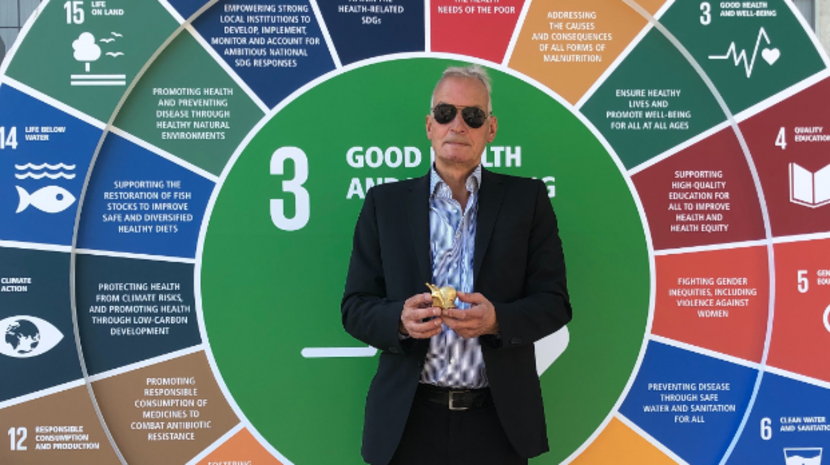We are Behind in Implementing the Sustainable Development Goals. What’s Next?

©CBM
In our latest blog, Michael Herbst, Head of Advocacy at CBM, discusses the current progress of UN's Sustainable Development Goals (SDGs). Despite high ambitions, we are not able to achieve these global goals, especially in the wake of challenges such as COVID -19. The post also highlights how the principle of 'Leave No One Behind' is finding its way into important international dialogues.
- Eradicate poverty and hunger worldwide by 2030.
- Ensure health and education for all.
- Reduce inequality and promote peaceful and inclusive societies.
These are some of the 17 concrete sustainable development goals (SDGs) agreed by the United Nations community in 2015 as part of the 2030 Agenda for Sustainable Development. Based on the SDGs, we can constantly measure what progress has been made and what is still missing. But we are behind at half time.
At the SDGs Summit in New York, we heard motivating speeches, which tried to wake up the rest of the world with powerful words and imagery. We heard promotional speeches, in which speakers shared the great work their nations were doing in SDG implementation. And we heard inspiring speeches, with new ideas for international cooperation.
One of the most positive things for me was that many speakers mentioned persons with disabilities. This is progress. The ‘leave no one behind’ statement of the 2030 Agenda, a key principle behind CBM’s work, was also often cited as a driving force for action.
However, there was plenty of news to feel concerned about. The global effects of the COVID-19 pandemic and the Russian aggression in Ukraine have unfortunately destroyed much of the progress that had already been made.
Two reports presented at the beginning of the summit, one from the UN Secretary General and one from an independent group of scientists, stated that we were far behind in implementing the SDGs. Only 15% out of 169 of the targets are on track – a statistic that was repeated throughout the event.
At the summit, the civil society sector was an observer of the meetings between heads of state. When the agenda was adopted in 2015, the civil society sector was involved in meetings with multiple stakeholders. This momentum now seems to have been lost.
What’s next?
Consistent implementation of the SDGs will benefit everyone, so it’s vital that nation states and civil society organisations keep striving to achieve them. Next year, in September, the Summit of the Future will build upon this year’s summit, with the aim to produce an action-oriented ‘Pact for the Future’ to strengthen international cooperation to achieve common goals.
We will keep striving for the Sustainable Development Goals to be realised globally and continue to advocate for disability inclusive development. Behind the scenes, civil society organisations and policy makers are continuing to discuss the second half of the 2030 agenda. Some stakeholders are even discussing what a post-2030 agenda might look like. We will need another system of goals on global development.